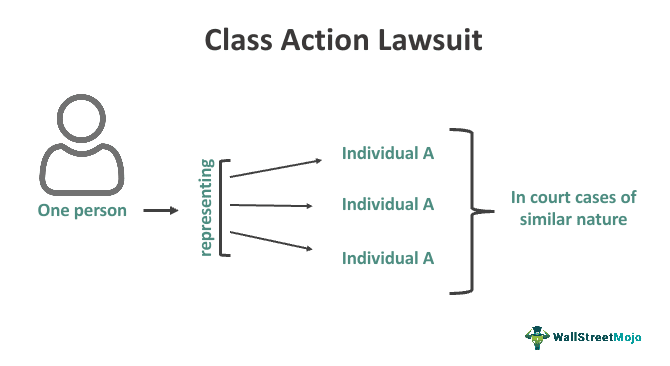Navigating the Refine of Class Activity Suits: Expert Recommendations for Lawyers
Course activity suits existing special challenges for legal representatives, requiring a deep understanding of the intricate legal landscape and meticulous focus to detail. Browsing this process effectively requires greater than simply legal knowledge; it requires a tactical strategy and expert suggestions. In this discussion, we will discover essential facets of class action legal actions, including the course qualification process, engaging and recognizing course participants, building a robust case strategy, taking care of exploration and evidentiary challenges, and eventually attaining successful resolutions. By delving into these vital topics, attorneys will certainly gain indispensable understandings and practical guidance to effectively navigate the complex world of class action litigation.
Comprehending the Class Accreditation Process
Understanding the course qualification procedure is necessary for attorneys managing class action legal actions. Course accreditation identifies whether a lawsuit can continue as a course action, allowing a team of people with similar cases to sign up with together in a single legal action. The procedure involves conference certain legal requirements and showing that the situation meets the standards for class certification.
To start, attorneys must recognize a defined course of individuals who have actually suffered comparable harm or injuries. They must reveal that the class is completely various, making it impractical to manage each case independently. Furthermore, legal representatives need to establish that the insurance claims of the course participants share common inquiries of law or reality.
Next, legal representatives should show that the named complainant, who represents the course, has common cases and defenses that are common to the whole class. The named complainant should additionally be a sufficient rep, implying they will relatively and sufficiently shield the interests of the course.
Finally, attorneys need to show that a course activity is the exceptional approach for dealing with the cases (Class action lawsuit). This entails considering aspects such as the performance and manageability of a class action compared to private legal actions, as well as the capacity for inconsistent judgments if instances were handled separately
Comprehending the course qualification procedure is crucial for lawyers to efficiently navigate class action claims. It calls for mindful evaluation, critical preparation, and a thorough understanding of the appropriate legal standards to guarantee the success of the class certification movement.
Identifying and Engaging Class Members
Once class certification has actually been granted, lawyers must proceed with the essential task of identifying and engaging course members in order to efficiently pursue the class activity legal action. This action is necessary as it figures out the dimension and structure of the class and plays a significant role in the success of the lawsuit.

To identify potential class members, lawyers frequently rely on various methods such as public notices, promotions, and media projects. These approaches intend to get to as lots of prospective class members as feasible and give them with details regarding the claim. Furthermore, lawyers might additionally use databases, public documents, and surveys to identify people that may qualify as course participants.
Engaging course participants includes establishing interaction networks and building a relationship of trust fund and openness. Attorneys must make certain that course members are maintained notified about the progression of the claim and have a clear understanding of their rights and commitments. Normal updates with e-newsletters, web sites, and social media platforms can help keep interaction and foster a feeling of community amongst class members.
In many cases, attorneys might deal with challenges in involving and recognizing class participants, such as finding people who have actually moved or making sure participation from those that might be unaware of their civil liberties - Class action lawsuit. By using diligent and extensive techniques, legal representatives can make the most of the involvement of course participants and enhance the general toughness of the class action claim.
Structure a Solid Instance Strategy
Developing a reliable and durable instance technique is vital for legal representatives involved in class action suits. With several plaintiffs and complicated lawful problems, it is critical for lawyers to carefully plan their method to guarantee the ideal possible outcome for their clients.
The very first step in building a solid instance approach is performing a thorough examination. Lawyers need to gather all relevant facts, records, and proof to support their claims. This consists of determining prospective defendants, collecting witness statements, and evaluating any relevant legislations or policies.
As soon as the examination is complete, legal representatives must evaluate the strength of their situation. They need to review the prospective risks and advantages of pursuing lawsuits, thinking about aspects such as the possibility of success, possible damages, and the schedule of resources. This analysis will certainly assist attorneys establish the most ideal legal concepts and techniques to use.
Partnership with specialists is one more essential facet of developing a solid instance technique. Legal representatives ought to seek advice from professionals that can provide useful understandings and opinions on intricate technological or scientific issues. These specialists can help enhance the lawful arguments and improve the reliability of the situation.

Managing Exploration and Evidentiary Challenges
After conducting a detailed investigation and establishing a solid case technique, click to read legal representatives must visit this website now browse the obstacles of managing discovery and evidentiary concerns in class action suits. Exploration is a critical phase in class action lawsuits, where both celebrations exchange appropriate details and proof.
One of the main difficulties in handling exploration is the substantial quantity of information that needs to be reviewed and evaluated. Class activity claims often involve various plaintiffs and accuseds, leading to a considerable quantity of papers and digital information. Legal representatives have to use reliable record monitoring systems and advanced technology tools to enhance the discovery process and recognize relevant evidence efficiently.
Another challenge is guaranteeing that the discovery process abides by applicable regulations and laws. Legal representatives have to be acquainted with the Federal Policies of Civil Procedure and any local regulations controling the certain jurisdiction where the class activity claim is filed. They should stick to target dates, manage objections, and fix disputes connected to the extent and significance of discovery demands.
Evidentiary difficulties also emerge in class activity suits. Legal representatives should carefully assess the admissibility of proof and expect possible objections from opposing advice.
Successfully Dealing With Course Action Claims
To accomplish a desirable end result, lawyers must employ effective strategies for successfully dealing with class action suits. This assessment will help guide the decision-making process and inform the arrangement approach.
An additional vital facet of efficiently solving course action legal actions is effective interaction with class participants. Attorneys ought to keep class participants educated regarding the development of the case, address their problems, and make certain that their civil liberties are secured throughout the process. This can help construct depend on and support from the class participants, which may enhance the likelihood of a desirable negotiation.
Furthermore, attorneys need to be her response prepared to engage in mediation or different conflict resolution methods to resolve the course action lawsuit. These approaches can offer an extra effective and affordable means to reach a resolution, staying clear of the time and expenditure of a prolonged trial. Lawyers should be skilled arbitrators and have an extensive understanding of the applicable regulations and regulations to properly advocate for their customers' interests.
Final Thought
In conclusion, browsing the procedure of class activity lawsuits needs a deep understanding of the course certification procedure, reliable identification and involvement of course members, calculated case building, and experienced management of discovery and evidentiary obstacles. With expert guidance and mindful planning, lawyers can effectively settle class action claims and attain beneficial results for their customers.
In this conversation, we will explore essential facets of course activity lawsuits, including the class accreditation procedure, recognizing and engaging class members, developing a durable instance approach, handling discovery and evidentiary challenges, and ultimately accomplishing successful resolutions.Comprehending the class accreditation procedure is necessary for legal representatives handling course activity legal actions. Course qualification establishes whether a legal action can continue as a course activity, enabling a group of individuals with similar claims to join with each other in a solitary legal action (Class action lawsuit).After performing a detailed examination and establishing a strong case strategy, lawyers have to currently browse the obstacles of managing exploration and evidentiary problems in class action lawsuits.An additional crucial element of effectively fixing class activity claims is efficient communication with course participants